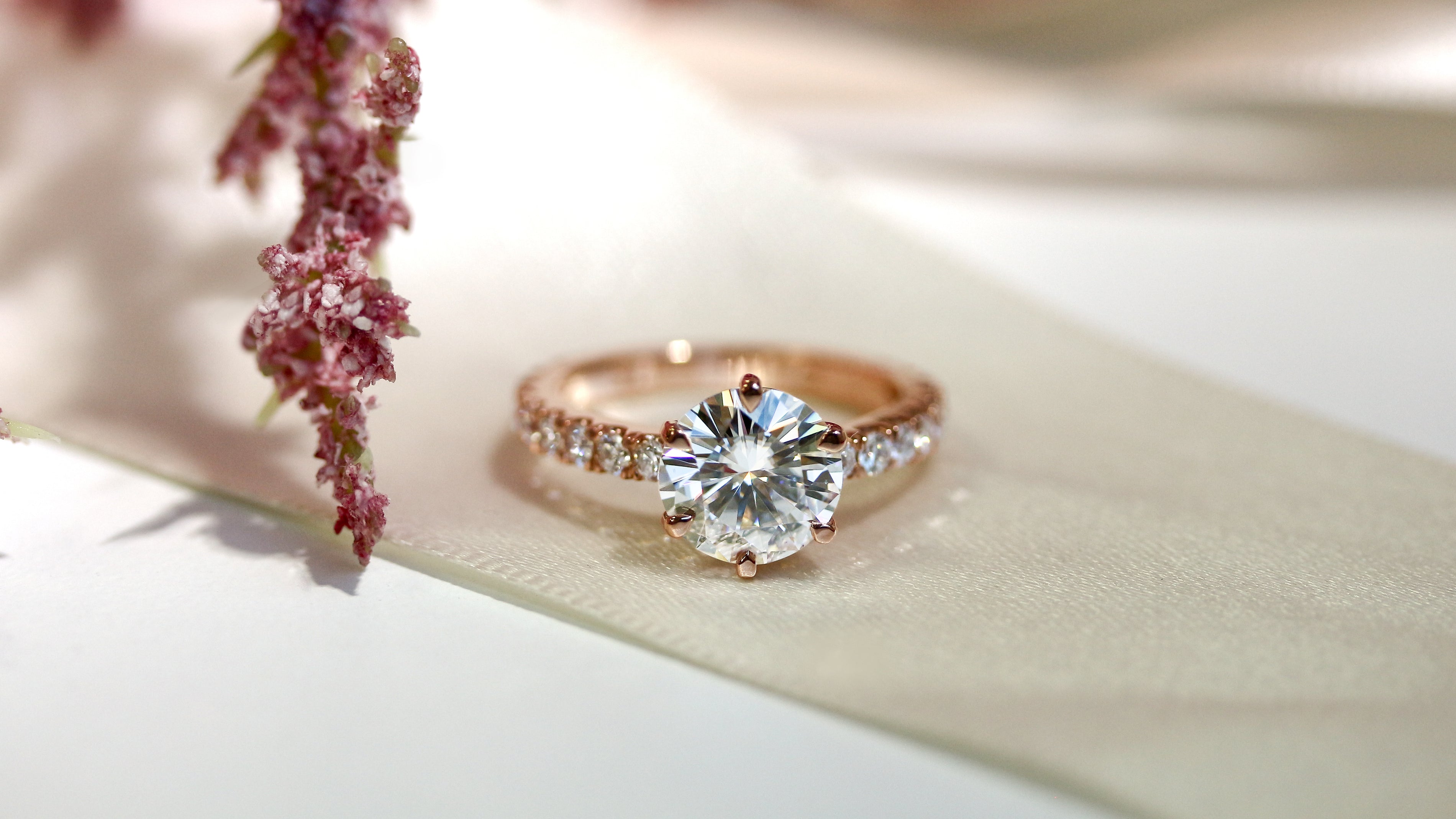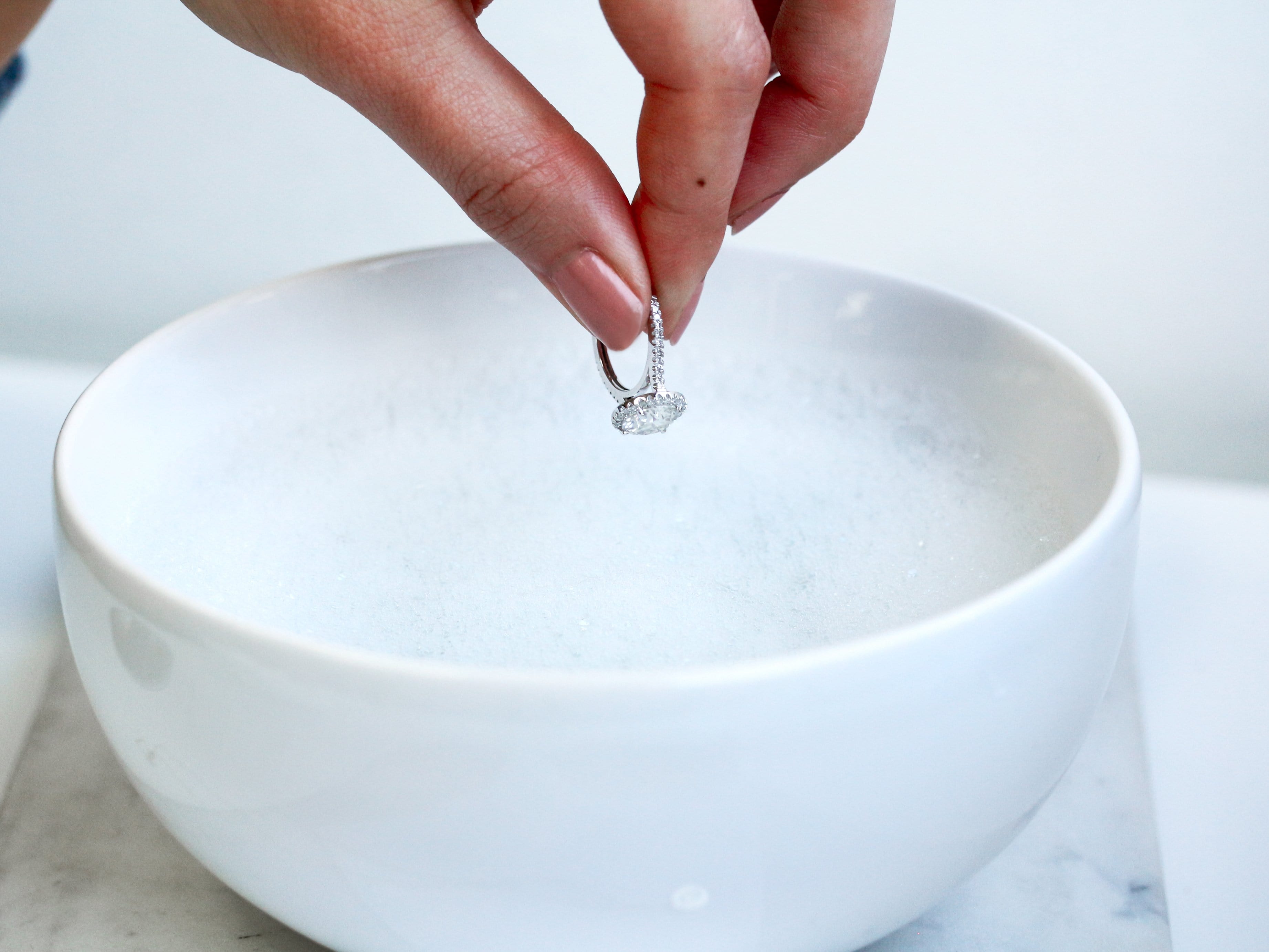Are you looking for a conflict-free and affordable mineral stone for a ring? You have to know about moissanite!
Getting to Know an Inexpensive Diamond Alternative
Moissanite is a stone from meteorites. It’s made of silicon carbide and was discovered by a French chemist, Henri Moissan, in 1893 while he was examining rocks from a meteor crater in Arizona. It wasn't until 11 years later that these rocks were formally declared as Moissanite. This gem broke into the jewelry market when Charles and Colvard acquired the patent to create silicon gemstones.

According to experts, Moissanites are nearly colorless. They have a higher refractive index than that of a diamond, which is why it is the closest diamond alternative one can find in the market. It is basically more reflective and sparklier than the traditional diamonds because it bends the light twice as much. It's important to note that moissanites are not synthetic diamonds. This reason is why experts wouldn’t call it imitations. They are, instead, referred to as alternatives.
Moissanites are naturally occurring and much rare because they are from meteorites. It is both beautiful and durable, which is why it is one of the few gemstones for fine jewelry-making. It actually has a durable 9.5 rating in the Mohs Hardness Scale which makes it the second strongest gemstone in the world after only the ever-popular diamond. However, because of its rarity and the high demand for a diamond alternative, most of the moissanite in the market now are lab-created.
It has the right brilliance, it is environmentally-friendly, and as beautiful as diamonds, but costs much less. So is it the best alternative for diamonds?
Grading Moissanite
Diamonds are graded based on the 4 C's (cut, color, clarity, and carat weight) system by the Gemological Institute of America (GIA) to determine its value. Color grading uses an alphabetical scale from D to K. Colorless diamonds get a "D" while the ones with strong yellow or brown overtones receive a "K". Ratings G, H, and I are for near-colorless diamonds.
The GIA only grades earth-mined or man-made diamonds. Moissanite is a simulated gemstone which means that it cannot be graded for any of the 4 C's. Sapphire, Morganite, and other gemstone alternatives to diamond are excluded from grading, as well. However, while the GIA won't give a mark for Moissanite, other organizations can facilitate the grading. These gemologists and jewelers will also use GIA's scale to determine the Moissanite's color and clarity as a standard guideline.
Where Moissanite Stands in the Color Chart
The diamond color chart categorizes diamonds in three color ranges. They are K-Z, which refers to the colors faint yellow to deeper yellow; G-J, which refers to the nearly colorless category; and D-F, which classifies as colorless. The moissanite ten years ago falls on the G-J range. That’s because the technology that makes a gemstone colorless was unavailable at that time. Now, lab-created moissanite can fall on the D or E category. You can now buy moissanite that is colorless to completely colorless per the diamond color chart and still be able to save more than buying a diamond.
Cut and Carat
Because moissanite is almost entirely lab-grown, it is not valued based on carat but based on diameter measured by millimeter. The larger the stone, the higher the cost. Moissanite is also available in various cuts similar to diamonds, and the more complex the cut, the higher the value.
Moissanite is also comparable to diamonds when it comes to durability. It is more heat resistant and nearly as hard as diamonds.
Setting
Whatever the metal setting is, moissanite looks great. It captures the light well, which steals the attention from the engraved setting and other details. Moissanite has been growing in popularity among brides-to-be because of its fire and radiance. While you cannot beat the prestige and class that diamonds have gained over time, moissanite is already a great option for practical couples. When you go for small moissanite stones, it can be hard to tell whether or not it is a diamond.
Moissanite Pricing vs. Diamonds
Moissanite costs up to 90 percent less than the price of diamonds. As of 2020, a carat of moissanite is around $500 while diamond is about $4,000 per carat.
A two-carat, J-ranged diamond with VS1 clarity will typically cost the buyer $12,000. If you want to get the colorless one, it will cost over $24,000. That’s 100 percent more expensive just because of the slight color variation. That’s how expensive a single-rock diamond is.
Important Buying Tips to Remember
Colorless moissanite can be as breathtaking as a diamond if you have a trusted retailer where you can buy it. There are high-quality moissanite, and those are what you should purchase from legitimate retailers.
When shopping, don’t go for the cheapest version. Always pay for quality, but within your means. Quality costs more, but lasts for a lifetime. If you’re looking for the jewelry you can pass on from generation to the next, invest in higher quality moissanite.
Moreover, choose smaller moissanite. The more significant cut cannot pass as colorless. It’s also better if you have the gemstone cut in a brilliant round or a cushioned manner. It will give a colorless appearance as if it’s an expensive piece of diamond.
Finally, don’t ever put it in harsh cleaning chemicals. Moissanites are durable and fuss-free. But if you’re unsure about how a specific compound can impact the gemstone, it would be best to leave it alone.



